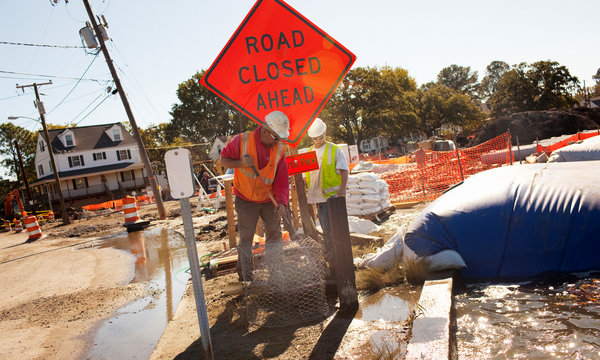Rising sea threatens coastal Norfolk: ‘No one who has a house here is a skeptic’
By LESLIE KAUFMAN
November 25, 2010 NORFOLK, Va. — In this section of the Larchmont neighborhood, built in a sharp “u” around a bay off the Lafayette River, residents pay close attention to the lunar calendar, much as other suburbanites might attend to the daily flow of commuter traffic. If the moon is going to be full the night before Hazel Peck needs her car, for example, she parks it on a parallel block, away from the river. The next morning, she walks through a neighbor’s backyard to avoid the two-to-three-foot-deep puddle that routinely accumulates on her street after high tides. For Ms. Peck and her neighbors, it is the only way to live with the encroaching sea. As sea levels rise, tidal flooding is increasingly disrupting life here and all along the East Coast, a development many climate scientists link to global warming. But Norfolk is worse off. Situated just west of the mouth of Chesapeake Bay, it is bordered on three sides by water, including several rivers, like the Lafayette, that are actually long tidal streams that feed into the bay and eventually the ocean. Like many other cities, Norfolk was built on filled-in marsh. Now that fill is settling and compacting. In addition, the city is in an area where significant natural sinking of land is occurring. The result is that Norfolk has experienced the highest relative increase in sea level on the East Coast — 14.5 inches since 1930, according to readings by the Sewells Point naval station here. Climate change is a subject of friction in Virginia. The state’s attorney general, Ken T. Cuccinelli II, is trying to prove that a prominent climate scientist engaged in fraud when he was a researcher at the University of Virginia. But the residents of coastal neighborhoods here are less interested in the debate than in the real-time consequences of a rise in sea level. When Ms. Peck, now 75 and a caretaker to her husband, moved here 40 years ago, tidal flooding was an occasional hazard. “Last month,” she said recently, “there were eight or nine days the tide was so doggone high it was difficult to drive.” … “If sea level is a constant, your coastal infrastructure is your most valuable real estate, and it makes sense to invest in it,” Mr. Stiles said, “but with sea level rising, it becomes a money pit.” Many Norfolk residents hope their problems will serve as a warning. “We are the front lines of climate change,” said Jim Schultz, a science and technology writer who lives on Richmond Crescent near Ms. Peck. “No one who has a house here is a skeptic.” … “The fact is that there is not enough engineering to go around to mitigate the rising sea,” he said. “For us, it is the bitter reality of trying to live in a world that is getting warmer and wetter.”
